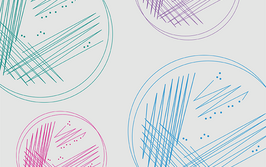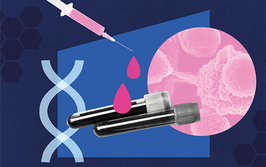Rebuilding the Microscope for Digital Pathology
The cost of robotic microscopy is a major barrier to the adoption of digital pathology system – but a new approach, Fourier ptychography, may offer a solution
Visual examination of biopsy sections by microscopy is the gold standard for cancer diagnosis. But with the improvements in digital imaging over the past decade, there has been a worldwide upsurge in attention on digital pathology – which promises to make the prediction, diagnosis, and prognosis of cancers and other diseases better, faster and cheaper than ever. In particular, digital pathology has become a popular alternative for secondary consultation with a remote specialist due to the time saved by sharing digital images instead of transferring glass slides. That time saving has turned digital pathology from a “blue-sky” approach into a promising field of diagnostic medicine. And it will only continue to grow with the advent of a new generation of pathologists trained on digital images and the emergence of artificial intelligence in medical diagnosis.
Digital pathology currently employs whole slide imaging (WSI) systems with high-resolution objective lenses to digitize histology sections. These WSI systems use high-speed mechanical scanning to generate gigapixel images of entire histology slides. The resulting images are complete enough to provide a quick overview of an entire section, but detailed enough to provide close-up views of areas of interest and accommodate automatic image analysis. But despite these advantages, WSI systems face several challenges. For instance, their high-magnification lenses provide the resolution required to resolve structural details, but their shallow depth of field makes acquiring in-focus images of sections with uneven topography difficult. To overcome this shortfall and reduce the need to re-scan slides, WSI systems perform focus map surveying or Z-stack imaging. Unfortunately, neither of these approaches is ideal, as focus maps can only reduce (not eliminate) out-of-focus areas, and Z-stack images create large files that are hard to view, share or archive. Finally, the need for precise mechanical movements and feedback control necessitate expensive hardware – current WSI systems can cost as much as US$150,000! The cost of acquiring and maintaining such a system is a significant barrier to adoption by hospitals, clinics, and pathology groups.
Recently, a novel microscopy technique, Fourier ptychography (1)(2)(3), has been developed to acquire high-resolution, wide field-of-view images without mechanical scanning. This technique uses an LED array for sample illumination and a low-magnification lens (typically a 2X objective) for image acquisition. Each LED element on the array illuminates the sample with one incident angle; for each incident angle, the device records one low-resolution intensity image. The images are then stitched together in the Fourier domain to produce a single high-resolution picture.
Unlike conventional microscopy platforms, the final achievable resolution of Fourier ptychography does not depend on the choice of objective lens; instead, it is determined by the largest incident angle of the LED array. It has been shown that this approach can use a 2X, 0.08 numerical aperture (NA) objective lens to produce an image with 0.5 synthetic NA. What does that mean? Essentially, that it combines the field-of-view of a 2X lens with the resolution of a 20X lens. The low-magnification lens also offers an additional advantage: a broad depth-of-field that can be extended even further with reconstruction algorithms – up to 0.3 mm, at least 50 times longer than that of a conventional platform with a similar numerical aperture. A simple, robust solution to WSI’s focusing problem!
Fourier ptychography is currently in its infancy, but I anticipate that it will continue to grow and expand. I look forward to seeing the new insights it brings to the development of digital pathology platforms in the future.
- G Zheng et al., “Wide-field, high-resolution Fourier ptychographic microscopy”, Nat Photonics, 7, 739–745 (2013). PMID: 25243016.
- X Ou et al., “Embedded pupil function recovery for Fourier ptychographic microscopy”, Opt Express, 22, 4960–4972 (2014). PMID: 24663835.
- K Guo et al., “Fourier ptychography for brightfield, phase, darkfield, reflective, multi-slice, and fluorescence imaging”, IEEE J Sel Topics Quantum Electron, 22, 77–88 (2016).
Guoan Zheng is Assistant Professor at the Department of Biomedical Engineering, University of Connecticut, USA




















